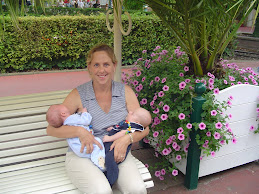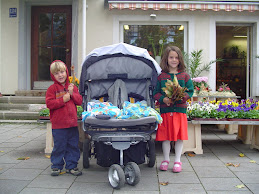This from Matthew on our way out to the car yesterday.
| Ryan's sketch of a small wooden statue I brought back from Hait. |
"Yes," obviously sensing - and trying to circumvent - another lecture on people less fortunate than ourselves and our obligation to love and respect them, "but is it a boy or a girl?"
Matthew didn't get his answer. Because I was seriously thinking about it and seriously not liking my conclusion.
You see, Haiti SHOULD be a man. I mean, all that violence and bloodshed, all the poverty and need. I don't want to dump this all on a woman.
Great, Haiti as a big welfare Momma. Her children on crack and smack, in gangs and in jail. That's what I need to be seeing in my mind's eye.
But this morning I woke up thinking about it again. And realised that, yes, Haiti truly is a woman.
| Anacaona is also revered in the Dominican Republic, Haiti's neighbour on the shared island of Dominica. |
And who lost.
1492, for those of you not from the New World, and the Native Americans in Haiti were wiped out by war and disease within two decades. Hence the need for slaves, and the brutal history of the Middle Passage, the trade of slaves from Africa to run sugar plantations in Haiti in order to make rum for Europe.
I like to think of Haiti as a "paper bag princess, " after a children's story by the same name written by Robert Munsch. In it the princess, whose kingdom has been leveled by a dragon who has also kidnapped her intended prince, uses her wit to outsmart the dragon and free her beloved. Dressed in a paper bag. When her prince - still carrying his tennis racket - snubs her for her poor attire, the princess doesn't end up marrying him after all.
She knows her true self worth comes from more than what she is wearing.
(Hmm. Might the dragon be France - or Europe - and the prince be the neglect of the modern world? Or should I be leaving you to draw that conclusion yourself?!)
Fairy tale endings are harder to find in real life than in childrens' books. Robert Munsch never did specify HOW the princess managed to circumnavigate the globe on her own, in a paper bag.
| Haiti's unique blend of African, French and Caribbean. |
I imagine the two of them, looking down on their beloved island
Isn't it nice to imagine a fairy tale ending for Haiti, a modern-day, paper-bag, Caribbean princess?



No comments:
Post a Comment